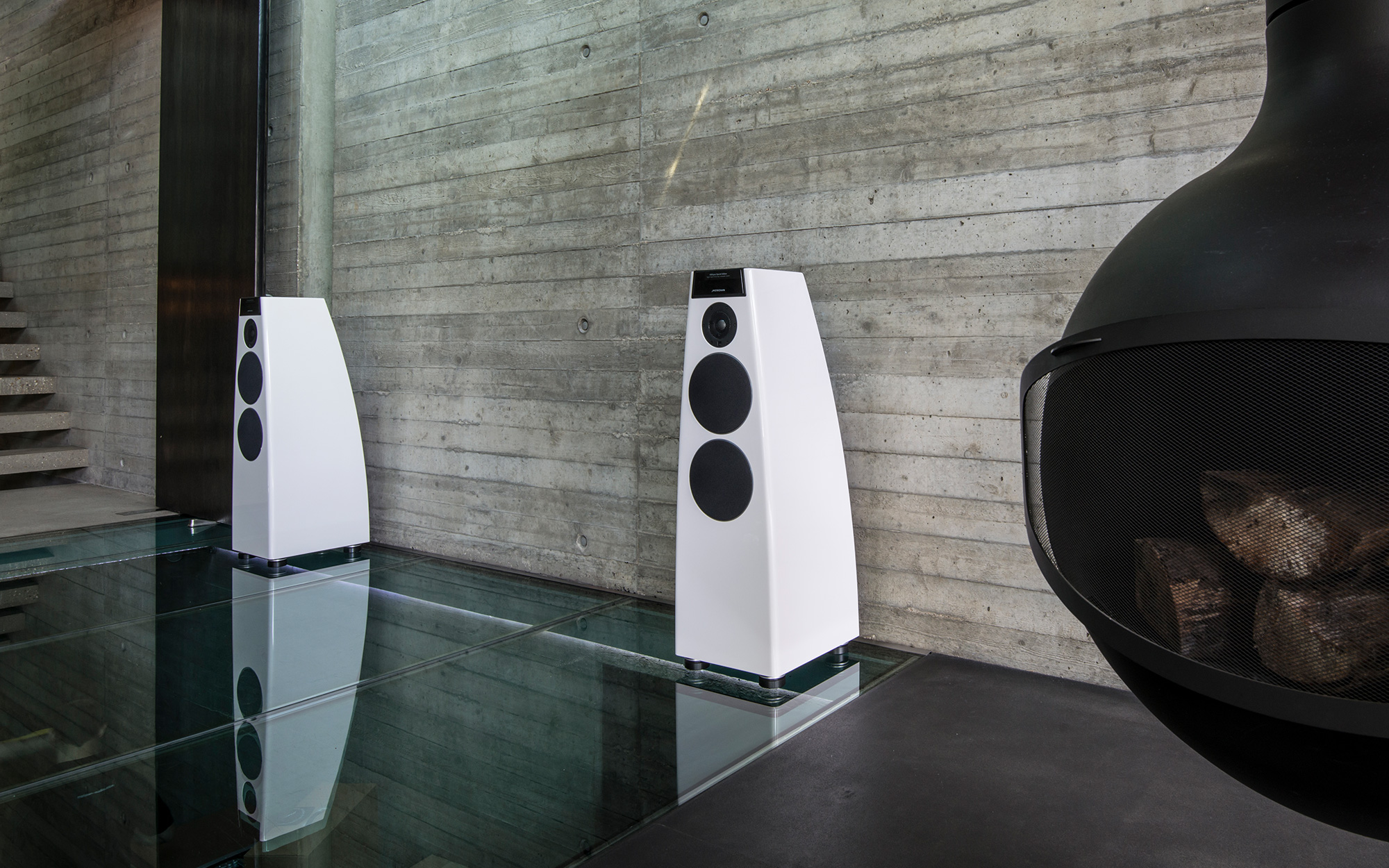
Reference Series
Meridian customers - create an account so you can register your product(s) for your extended warranty.
Dealers, integrators, and installers - create an account to request access to Dealer Resources and/or apply to become a Meridian dealer.

Reference Series
The Special Edition DSP5200 delivers ultimate high-resolution performance from a compact loudspeaker.
The two DSP devices used by the Special Edition loudspeakers provide the processing power allowing all audio, including MQA Core streams, to be rendered at 176.4/192kHz regardless of the incoming sampling rate. This results in increased resolution, detail and clarity to provide maximum fidelity from movie soundtracks as well as music.
Find a distributorReference Series
Special Edition DSP5200
The DSP5200SE contains a complete matched audio system, giving the highest overall quality, lower power consumption and the low-frequency performance of a traditional passive loudspeaker several times the physical volume. Finished as standard in piano lacquer black, our Select finishing option means Special Edition loudspeakers can also be supplied in the colour of your choice. Full-range floorstanding and horizontal centre-channel options are offered, for audio or home cinema solutions.
Meridian Bespoke Signal Mapping utilises digital signal processing to apply tailored crossover filters that are designed specifically for each configuration of drive units within a loudspeaker.
Meridian E3 Bass uses specifically designed filters to expand, extend and enhance the low-frequency response of the loudspeaker.
FFA (Full Frequency Alignment) is a combination of digital filters and delays to correct the group-delay of a loudspeakers. It ensures that all frequencies reach the listener’s ear at the same time.
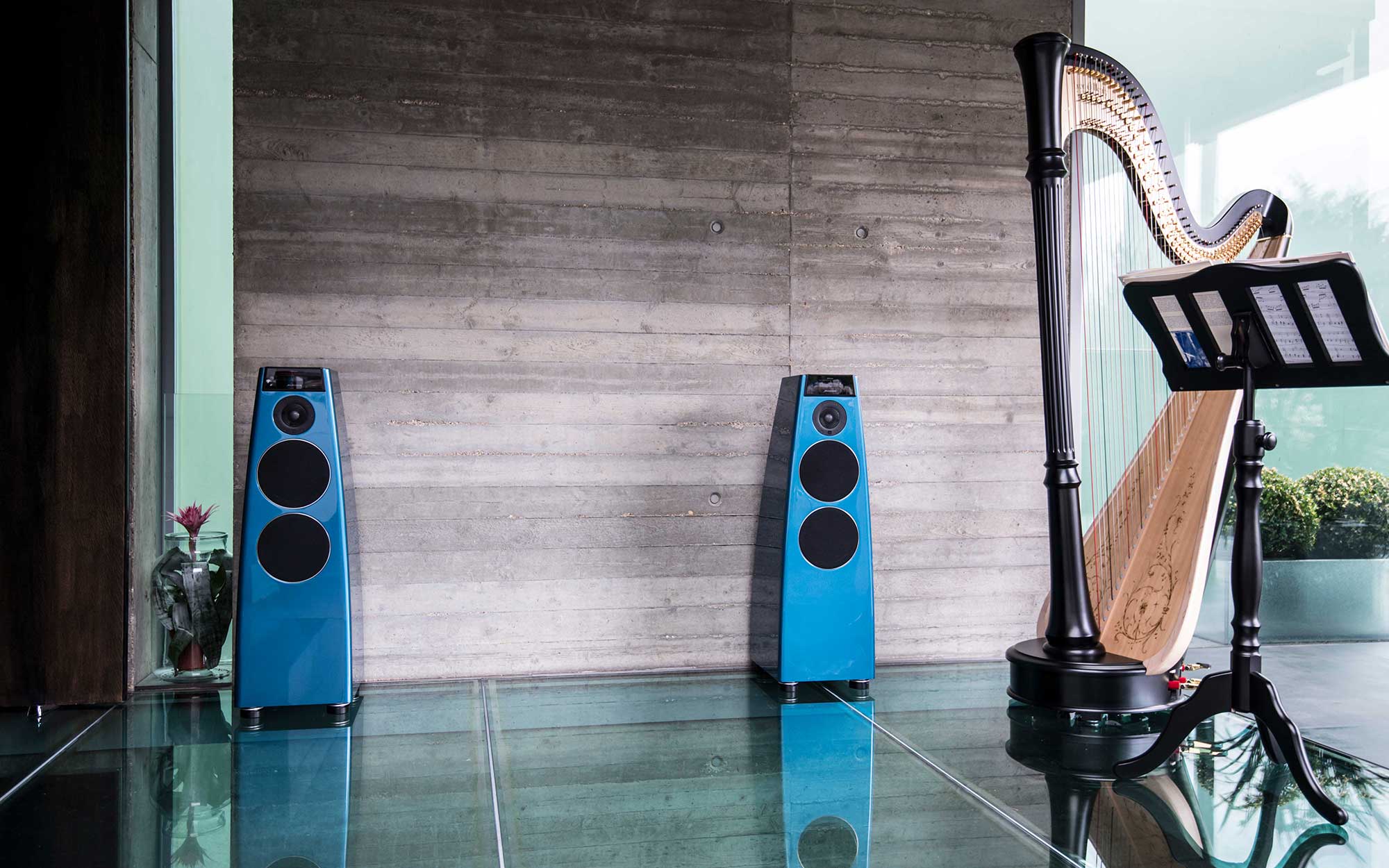
Meridian Q-Sync deploys Meridian's multiple “First In, First Out” buffering system which minimises jitter, ensuring perfect timing and improved clarity.
Meridian Pro-Active Bass protects the bass drivers from over-excursion, ensuring maximum bass output without damaging the drive units.
Meridian Pro-Active Thermal monitors the audio being sent to the mid-range drivers and tweeters and limits the overall volume of the loudspeaker if there is a risk of the drive units getting too hot.
True Time is Meridian's proprietary Apodising Filter that avoids pre-ringing and cleans up the effects of early filters, converting pre-echo to post-echo.
Meridian True Link is an encryption method for transferring high-definition digital audio over SPDIF connections. It allows secure movement of digital audio whilst ensuring that the SPDIF clock signal can be transmitted with minimum degradation.
Meridian Free-Q is used to compensate for acoustic problems associated with specific loudspeaker placement conditions.
The Reference Series
The Reference series comprises of five loudspeakers, each of which represents the pinnacle of what Meridian has achieved in their respective formats.
Built by hand in the UK, all Meridian loudspeakers feature Digital Signal Processing (DSP) technology. This ingenious, yet elegant design means that the loudspeaker enclosure contains the entire system’s electronics including its amplification. In common with all other Meridian loudspeakers, the models in the Reference series support a suite of Meridian’s unique technologies.
Here you will find a quick overview of the product highlights and features.
Here you will find installation information and operating instructions.
Here you will find a summary of the complete range of Meridian products in one document.
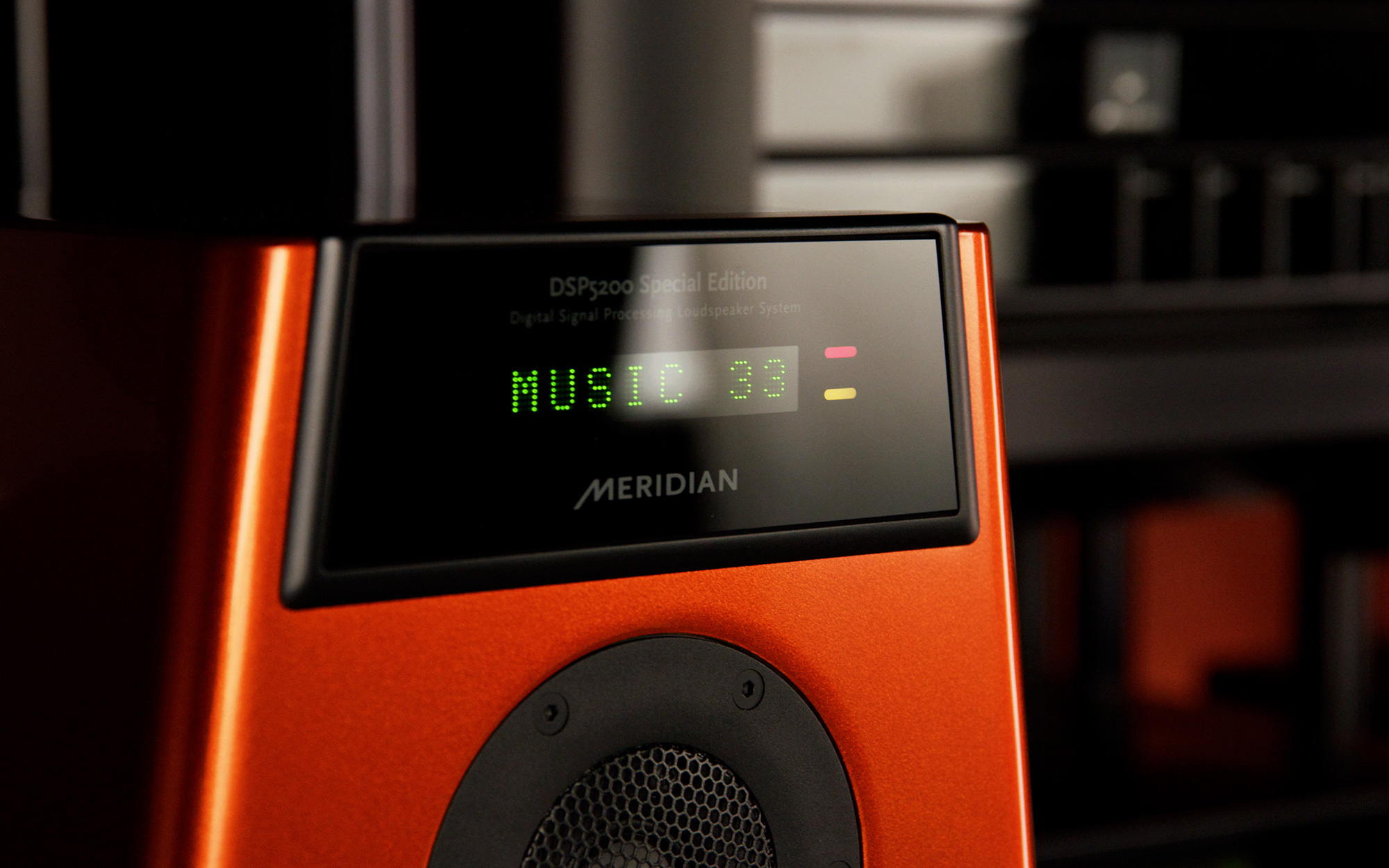
AUDIO INPUTS
Meridian SpeakerLink (RJ45) & RCA phono digital inputs accepting 32kHz to 96kHz sampling rates at up to 24-bit
AUDIO OUTPUTS
Meridian SpeakerLink (RJ45) & RCA phono digital outputs delivering 32kHz to 96kHz sampling rates at up to 24-bit
PERFORMANCE
Peak SPL: 116dB at 1m (music material)
Noise less than 15dB SPL
Frequency response In room within 3dB: 35Hz - over 32kHz
AMPLIFIERS
3 x 75w (225 w)
Overall distortion typically <0.02% at any frequency or level
LOW-BASS DRIVER
160mm polypropylene long-throw
MID/BASS DRIVER
160mm polypropylene long-throw
BERYLLIUM DOME TWEETER
25mm (1”) Meridian piston in short-horn, beryllium dome with silver voice-coil
DISPLAY
Eight-character display with additional status indicators; can be blanked during use
DIMENSIONS / WEIGHT
WIDTH: 178mm [7in] tapering to 300mm [11.8in]
DEPTH: 220mm [8.7in] tapering to 360mm [14.2in]
FOOTPRINT (W x D): 300mm [11.8in] x 360mm [14.2in]
WEIGHT: 27kg [59.5lbs]
POWER
20W standby; 300W maximum
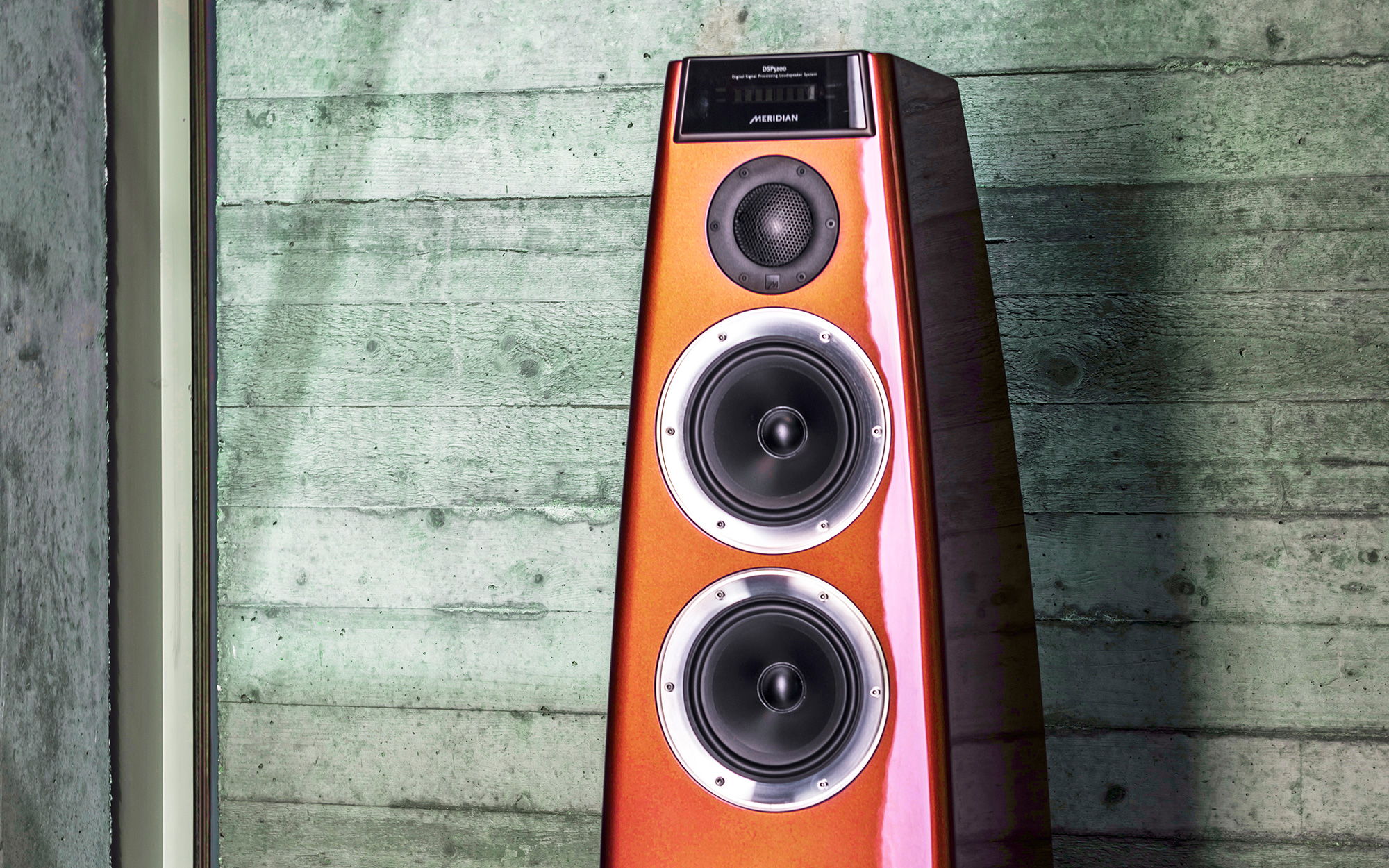
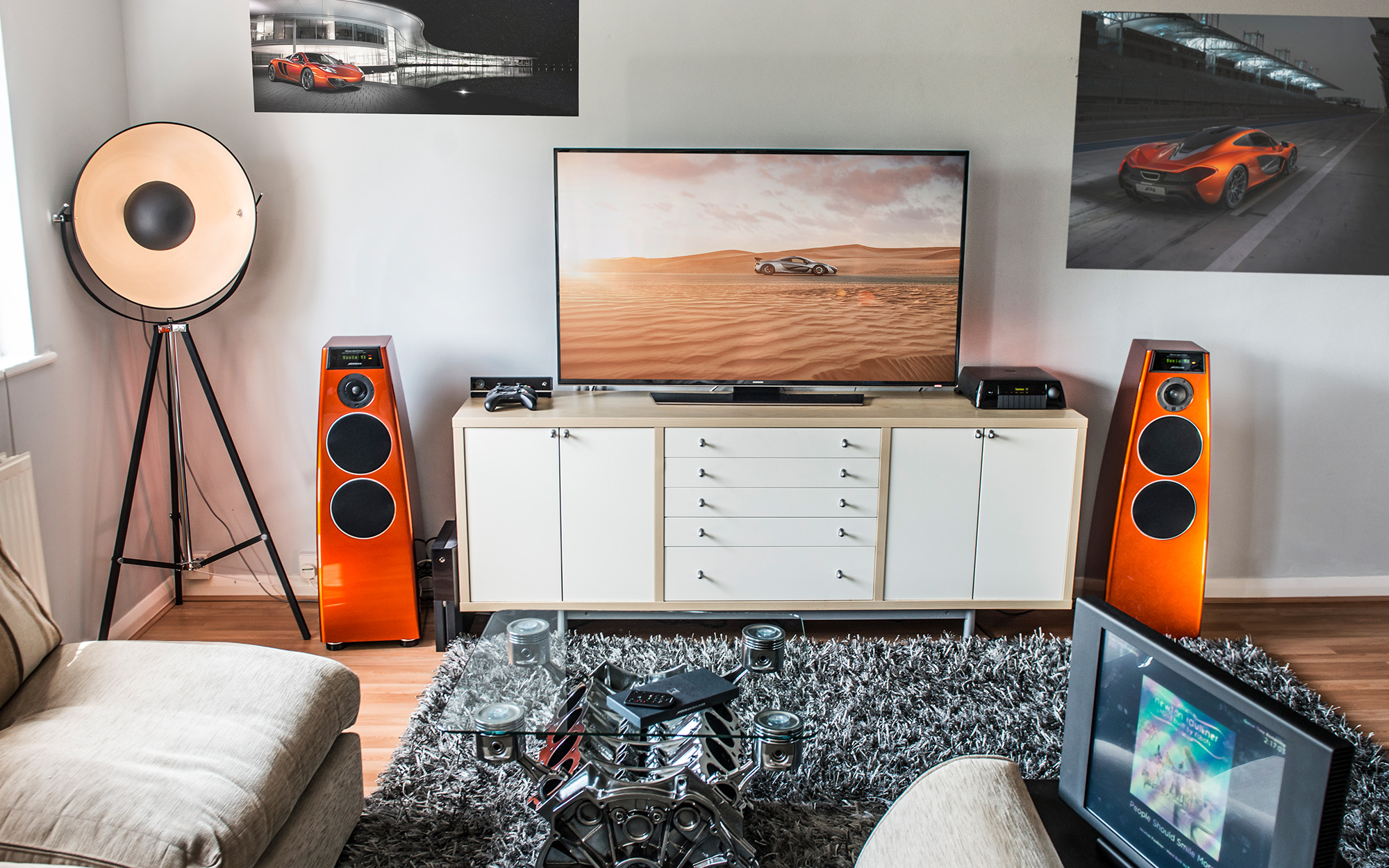
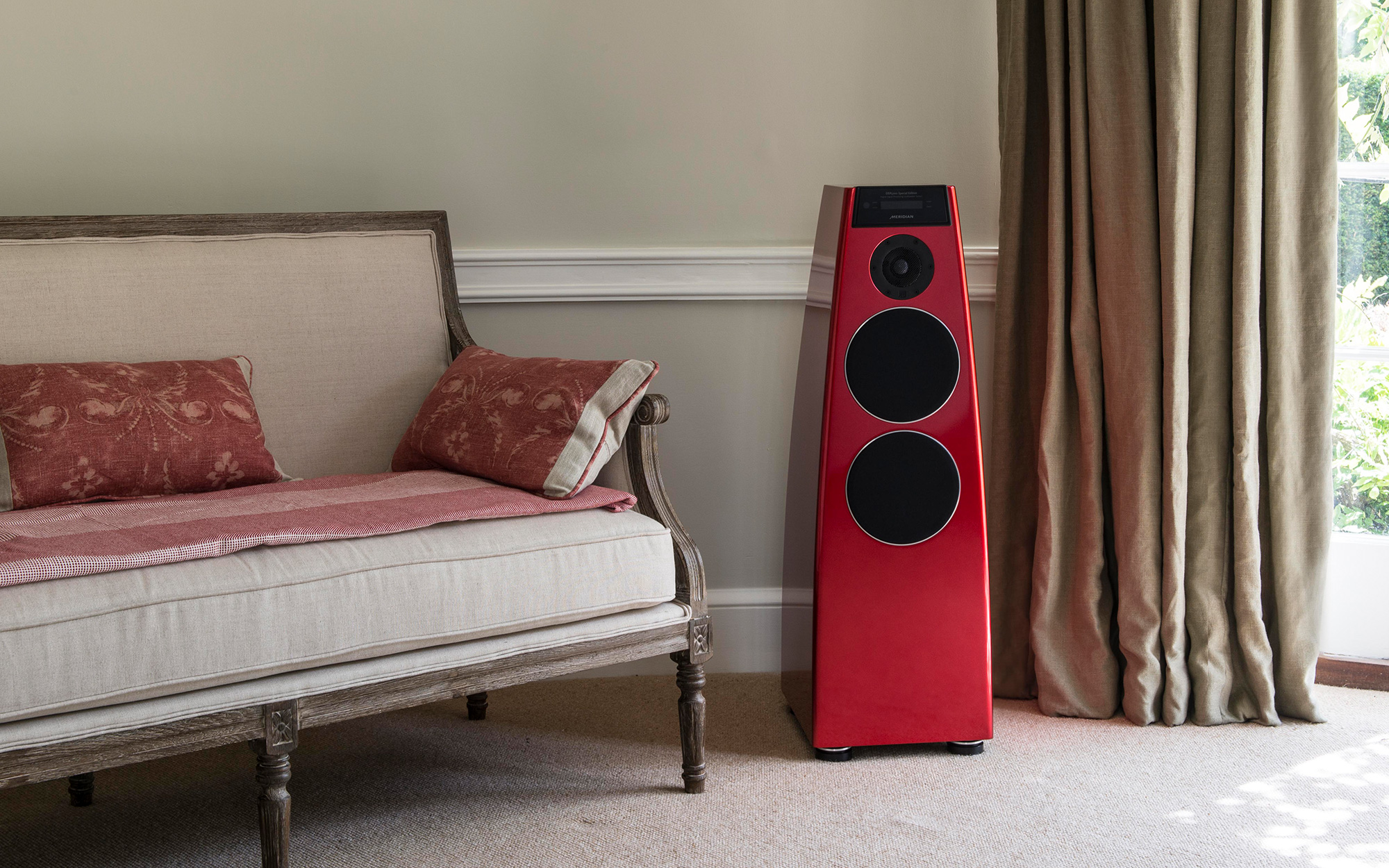

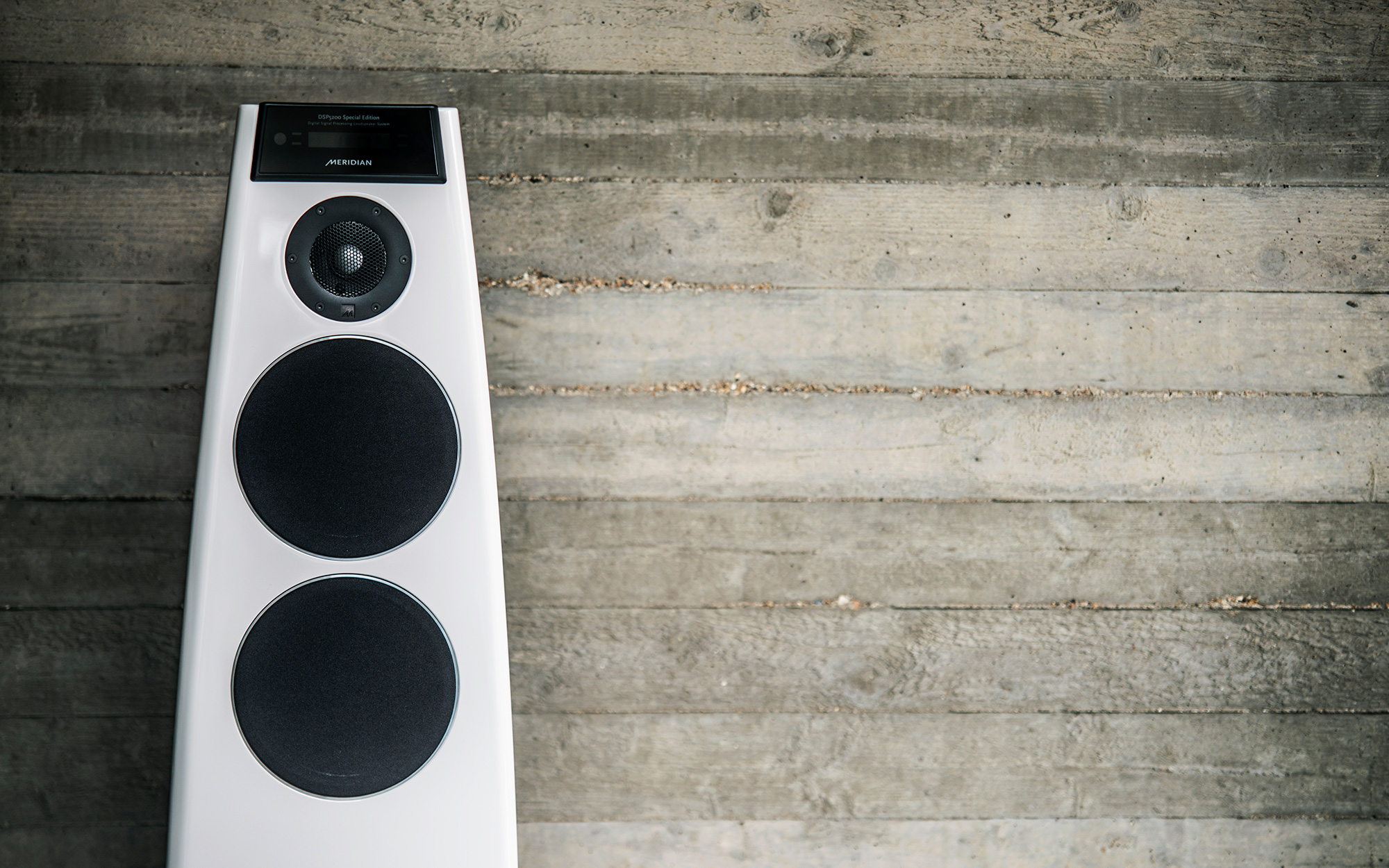
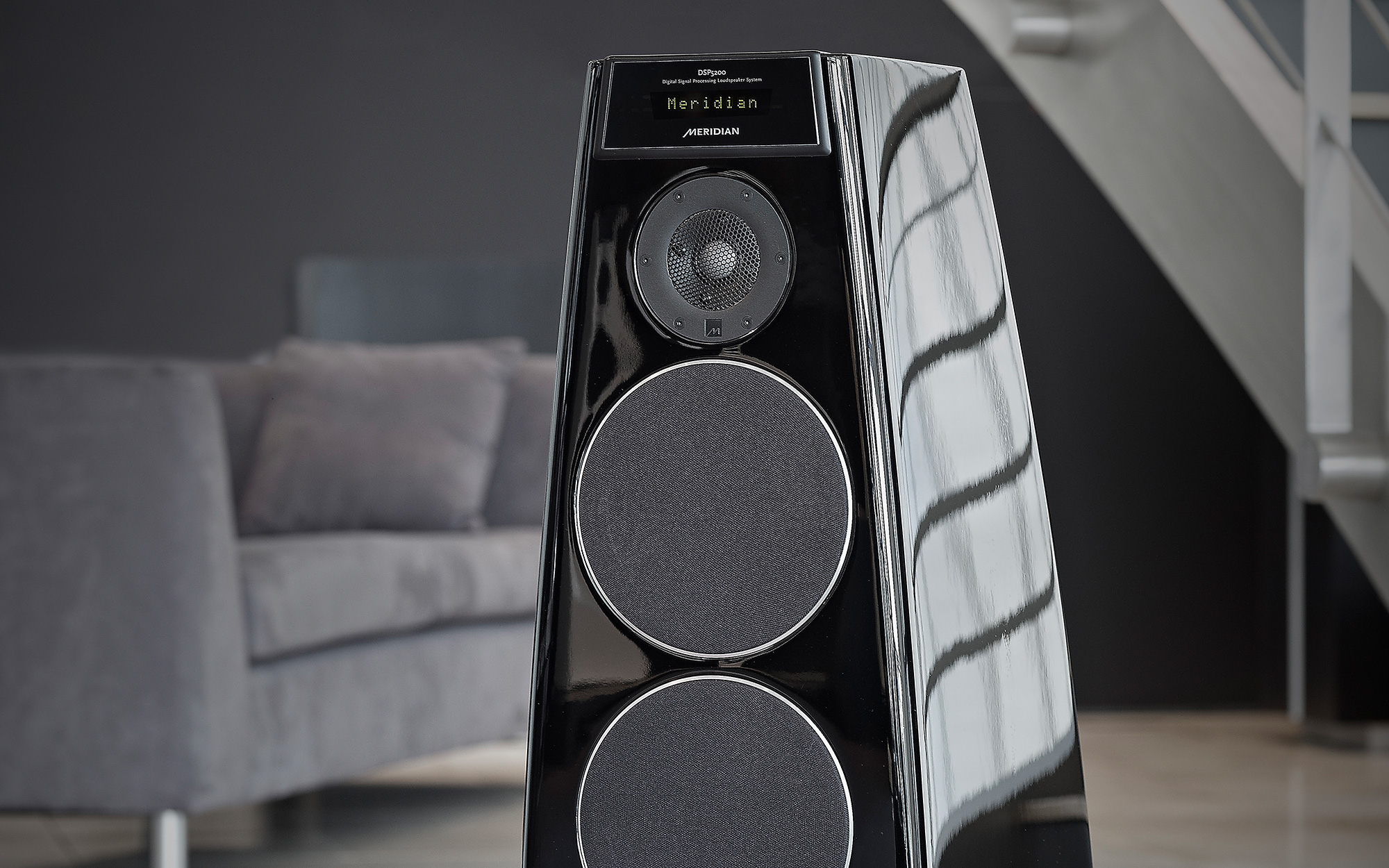

The two sockets are not hardware-set as either D1 or D2. Instead, the input numbering is determined by a setting chosen when the loudspeaker has its 'Type' set. If 'RJ45' was selected when the loudspeaker was Typed, then the SpeakerLink input becomes 'D1'. If 'co-ax' was selected during Typing, then the RCA (coaxial) digital input will be assigned as 'D1'.
The loudspeaker acting as the Master loudspeaker in the system can be configured to switch between its input sockets according to which source is selected on the system. This feature allows a pair of loudspeakers to be fed with two different sources of audio without additional switching hardware. Naturally, this allows the loudspeakers to be used as a simple, self-contained system with two sources, but it also allows for a pair of loudspeakers which are connected to an audio matrix or other multiroom equipment to be switched between the external feed and a source local to the room containing the loudspeakers.
No. In a straightforward three-way design, bass output is limited by the capabilities of the single drive unit used for the low frequencies. In the DSP5200SE, the tweeter receives the treble and one of the mid/bass drivers is sent the rest of the frequency range. The second mid/bass driver is sent purely low-frequency bass. This doubles the bass-handling of the loudspeaker without adding the inevitable blurring of the image caused when sound is crossed over between the tweeter and two mid-range drivers on the front of the loudspeaker. The '2½-way' design of the DSP5200SE combines the purity of the single treble-to-mid crossover found in a three-way design with the additional bass capability of a three-driver, two-way design.
Yes. By default, the loudspeakers have EBA enabled and the internal switch for EBA is set to change only if a loudspeaker receives the relevant command on its SpeakerLink input. This is determined by the setting 'EBA SL' in the configuration of the loudspeaker. Having the setting on 'SL' means 'do as instructed over the SpeakerLink connection'. This setting can be changed to 'ON' or 'OFF' which switches EBA to be enabled or disabled irrespective of any command received over SpeakerLink.
Yes. There are options for what the loudspeakers display. One option has the display light up briefly when the loudspeaker controls are used, but blanked in between times. For example, the display will appear to show the volume being turned up or down, but will revert to blank after a second or two.
Either loudspeaker can be set as Master – it just needs to be connected to the 'Master' socket on the product feeding the loudspeakers. The one consideration to be taken into account is that only a Master loudspeaker can be configured to accept IR commands. If IR control through the loudspeakers is a requirement, it may be that the physical location of the loudspeakers may mean that one is better positioned than the other in regard to line-of-sight for reception of IR from the user’s remote control.
If a Meridian product is feeding the loudspeakers from a single SpeakerLink output then the loudspeaker directly connected to the source product must be set as Master. For convenience of wiring, this usually leads to the loudspeaker which is nearest to the source product being set to Master. However, it is perfectly okay to set the more-distant loudspeaker as Master as long as the cabling is arranged accordingly. IR control is possible only on the Master loudspeaker, not the Slave. So, if IR control is a requirement and one of the loudspeakers is better positioned than the other in regard to line-of-sight for reception of IR from the user’s remote control, then this loudspeaker may need to be made Master regardless of which is nearest to the source product.
In a Meridian system, digital audio is distributed in pairs of channels. This seems obvious when a pair of loudspeakers is 'daisy-chained' However, it is also true when a system is 'star-wired'; each SpeakerLink lead always has the ability to carry two channels of audio. Therefore, each loudspeaker must be configured to pick up and play back the correct channel from the lead. Even in cases when there is no sound present in a channel, such as when there is no subwoofer defined in a surround system, the lead connected to the centre-channel still carries digital silence in the unused channel. Set the loudspeaker to pick up the wrong channel and it will output just this silence.
No. Meridian DSP speakers feature internal protection which, when activated, can demand high current from the mains supply in order to blow the fuse within the product. This is a deliberate aspect of their design and is a key safety feature. If, under these conditions, anything inhibits the current required to blow the fuse, the speaker will be exposed to circumstances for which it was not designed. Such circumstances could result in catastrophic damage. It may be thought that this can be avoided by using a mains conditioner which boasts a current rating which is higher than that required to blow the speaker’s fuse. However, the possibility of the mains conditioner itself developing a problem needs to be considered. If a problem in the conditioner restricts its current delivery capabilities, and then the speaker suffers a failure as described above, the fuse may not blow resulting in catastrophic damage.
This is the 'High Speed' indicator. It shows that the digital signal received by the loudspeaker has a sampling rate of 88.2 kHz or 96 kHz.
These signals are upsampled to 88.2 kHz and 96 kHz respectively within the loudspeaker.
This shows that the loudspeaker has activated its first level of thermal protection. When the loudspeaker’s internal thermal model suggests that the mid-range or tweeter is too hot, the DSP section will turn down its gain slightly and the green LED comes on. Since the bass isn’t turned down the loudspeaker will sound tonally unbalanced in this state.
This shows that the loudspeaker is taking extreme measures to protect itself from being overdriven. At volume levels over 95, if the first level of thermal protection is not enough to protect the loudspeaker, the loudspeaker will force its volume level to 95 and display 'Pro95' until it establishes that it has cooled sufficiently to go back into normal mode.
Yes. Audio fed into the coaxial input is fed through to the coaxial output and SpeakerLink output simultaneously.
Yes. Audio is sent out of the coaxial and SpeakerLink outputs simultaneously, regardless of which input socket is used.
Yes. The loudspeaker sends out comms from the BNC and SpeakerLink outputs simultaneously regardless of which input socket is used.
Yes. The loudspeaker sends out comms from the BNC and SpeakerLink outputs simultaneously regardless of which input socket is used.
MQA rendering is carried out according to metadata within the MQA core. This includes which filter should be used from the MQA library stored in the loudspeaker. Exactly what this involves and how it is done is part of the MQA process and is therefore subject to MQA’s intellectual property rights. In theory, the “instructions” carried in the metadata can vary from track to track, but in practice it is more common to work on an album-by-album basis. This is all part of what is signed off during the MQA process in the studio.